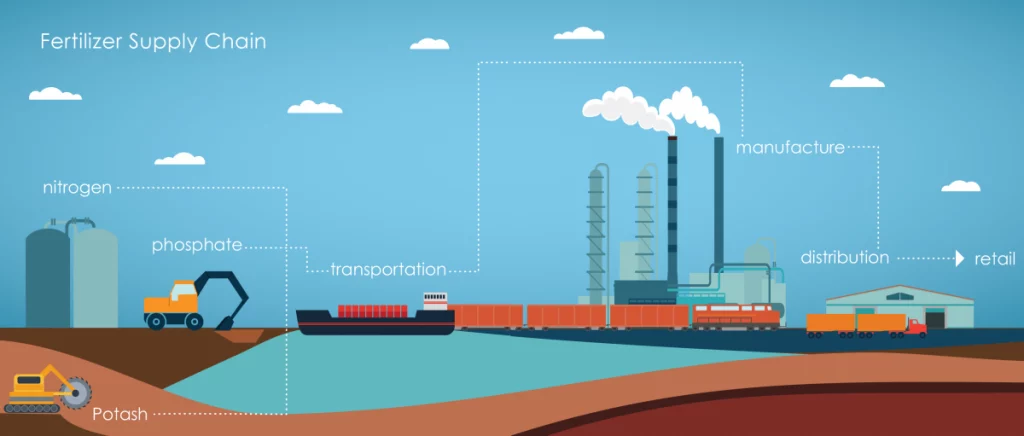The logistics of making it and moving it
Knowing what goes into fertilizer and how to use it responsibly is only part of the equation. With millions of acres of farmland growing hundreds of different crops in every almost country on Earth, transporting the exact nutrients to the farms that need it is a daunting logistical challenge.
It begins with the elements themselves. Minerals, such as potassium and potash, are obtained by mining, while nitrogen is extracted from the air through a reaction with natural gas.
These elements are processed through production plants and are shipped to various storage facilities before reaching the fertilizer retailers who blend the materials in precise proportions for specific plants in specific areas.
Fertilizer can be in solid, liquid or gas form. It is transported over oceans, on rivers, railroads, highways or sent through pipelines. This makes the fertilizer supply chain an incredibly elaborate network comprised of numerous suppliers, producers and distributors. So how does the system operate?

Step 1: Collect the Raw Materials
Phosphates are mined in the U.S., China, Morocco, Russia, Tunisia and more. Potash is mined in Canada, Belarus, Russia, China, Germany among others. Nitrogen is extracted from the air in plants located in the China, Russia, India, and others.
Step 2: Fertilizer Production Facility
The raw materials come together from many different sources to be chemically engineered into viable nutrients.
Step 3: Shipping & Storage
Fertilizer products are shipped to storage terminals to await orders from retailers.
Step 4: Retailer
Retailers create nutrient blends according to specifications from individual farms based on their soil tests and calculations.
Step 5: To the Farm
The retailer delivers the final product to the farm.
This process happens all over the world for thousands of farms growing dozens of different crops including cotton, corn, soybeans, wheat, hay, fruit, vegetables and flowers. This gives you an idea of the complexity of manufacturing fertilizer and getting it where it needs to go.
Next: The Fertilizer Industry